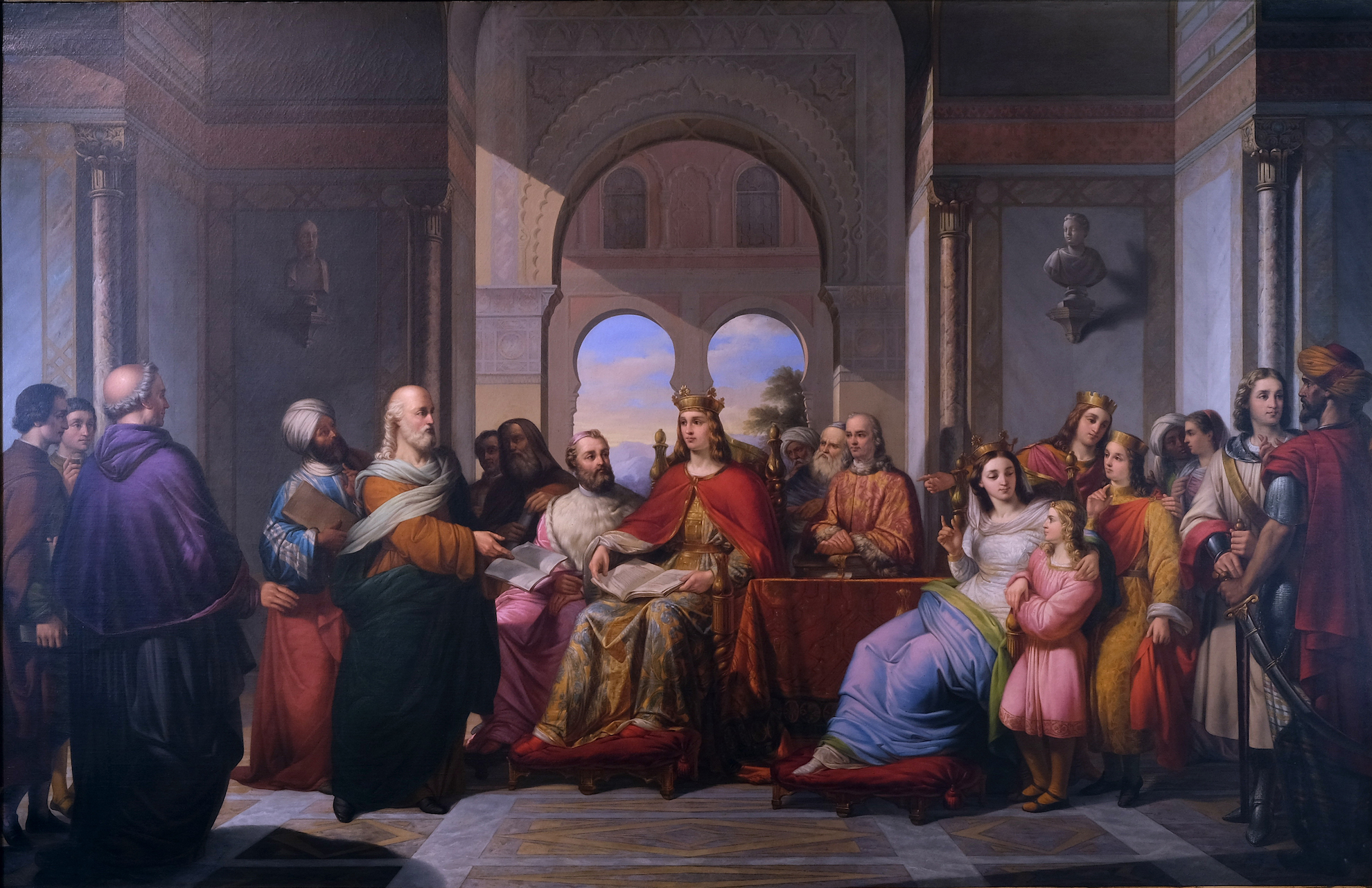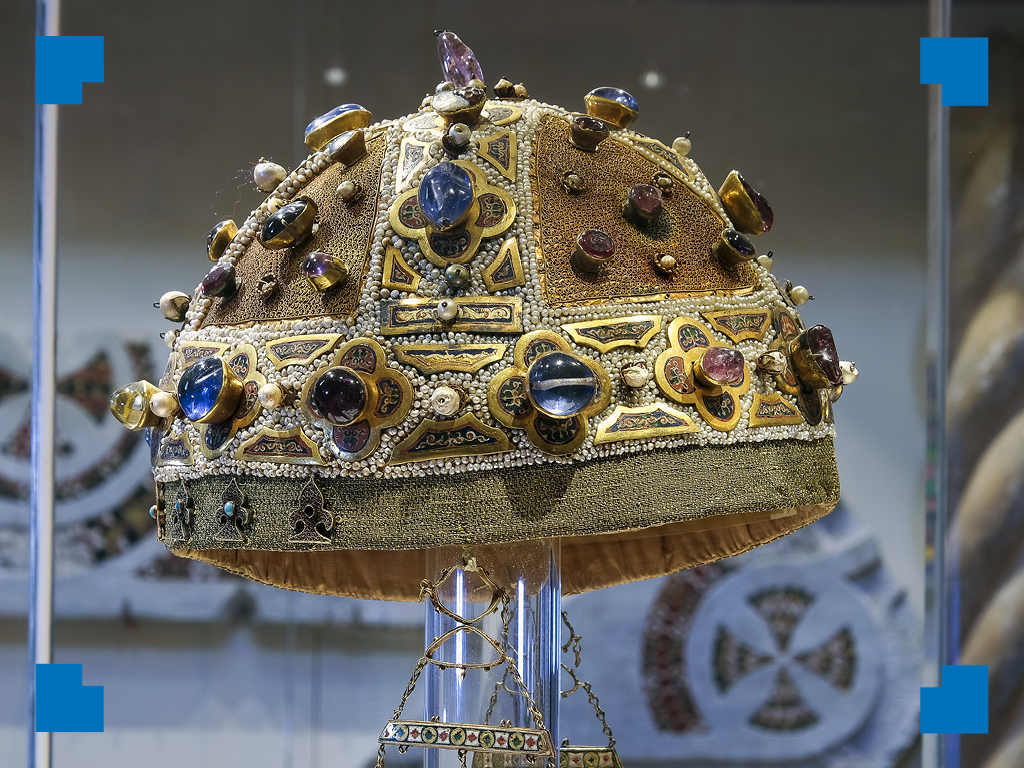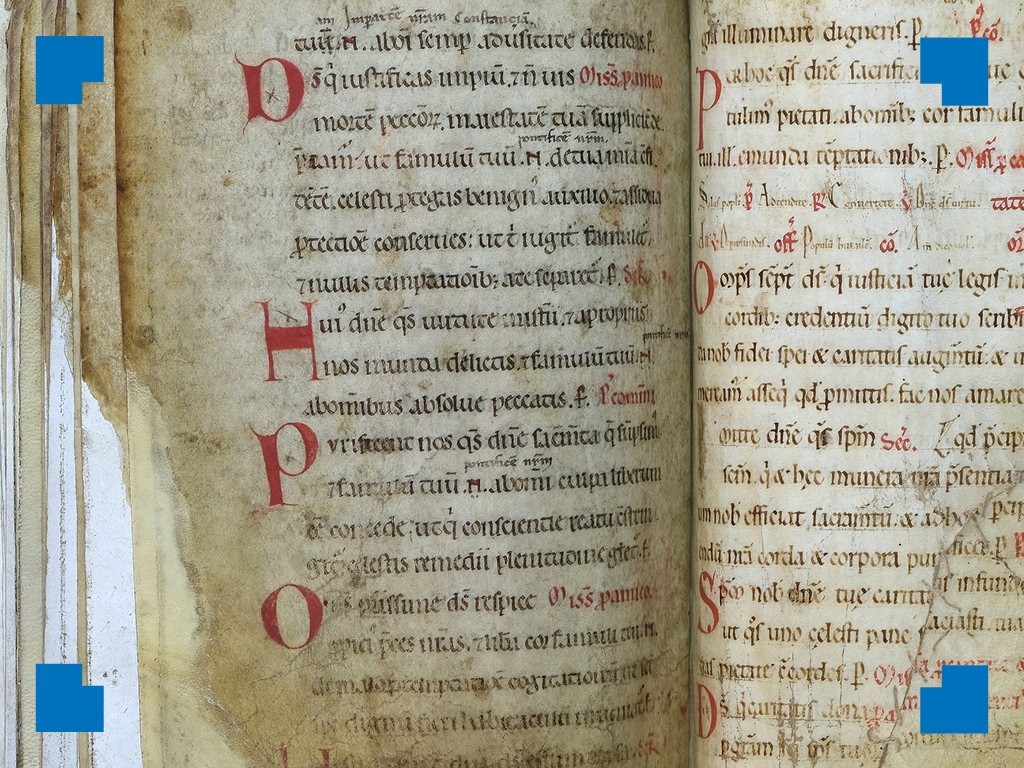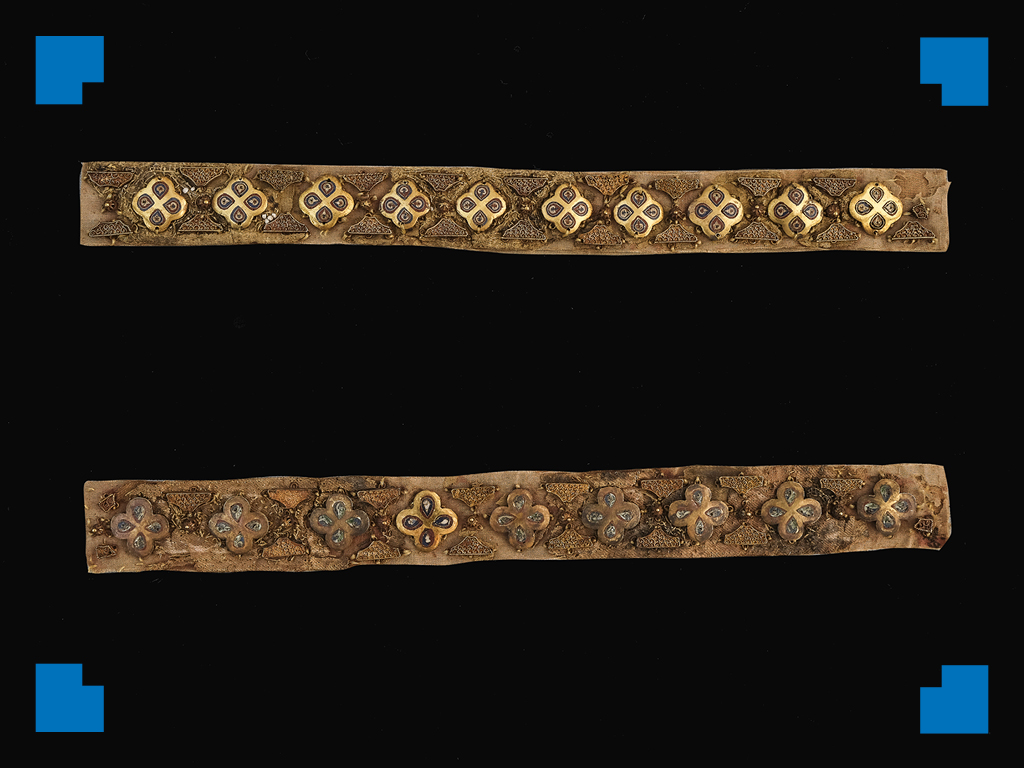
20. Frederick II receives from philosopher Michael Scot the translation of the works of Aristotle
Giacomo Conti, 1861
Frederick II receives from philosopher Michael Scot the translation of the works of Aristotle
oil on canvas within gilded wooden frame
(182×257 cm; canvas: 136×211 cm)
Palermo, Royal Palace
In 1220 the philosopher, scientist and astrologer Michael Scot (1190 – 1235-43 ca.) arrived in Bologna and became part of the court of Frederick II. To him we owe the translation from Arabic of the three books of Aristotle (384-322 B.C. ca.) that contributed to the European dissemination of the thought of the Greek philosopher.
The painting here displayed portrays the moment when the manuscripts were delivered to the Emperor in the presence of his family and a large court, which the painter imagines to be composed of churchmen, jurists and poets, such as Cielo d’Alcamo, Pier delle Vigne, Guido delle Colonne and Giacomo da Lentini. The result was a multicultural environment, also characterized by characters wearing “Arab” clothes.
The architecture of the room echoes an exotic atmosphere that recalls the widespread medieval Mediterranean architecture with Islamic influences, with Moorish arches and engaged columns, resembling the model of the “Hall of the Fountain” in the Zisa of Palermo.
The painting celebrated the magnificence and multiculturalism of the court of Frederick II, who defended the empire by fighting the Pope’s policy, perhaps hinting to the unification of the Kingdom of Italy, from which the State of the Church – only annexed in 1870 – was still missing.
Focus – The “Arab-Norman” Myth in Palermo in the Second Half of the Nineteenth Century
After 1860, when Italian unification was almost completed, the myth of the independent Kingdom of Sicily with an anti-Bourbon function was absorbed by the Sicilians’ desire to show the different regional components of the peninsula the importance of Arab-Norman culture.
Moreover, the medievalist taste looking at the architecture of the Norman, Swabian and Aragonese past was instrumentalized by the two main components of society.
The economically strong bourgeoisie appropriated it to give shape to a social history that they did not have, whereas the feudal aristocracy believed that it was the best language to symbolize the antiquity of the families in opposition to the new rich.
In the latter context we find Andrea Onufrio, who worked on the furnishings of the Forcella palace (then of the princes Licata di Baucina) and created expensive medievalist furniture in bone.
They were unique handmade pieces such as the casket purchased by Joshua Whitaker (cat. 23), who lived in Palermo in a Gothic-Venetian style building, while his brother Robert lived in a splendid villa with a neo-Gothic house.
Among the earliest examples of revival buildings in Palermo is the Galletti palace of the princes of San Cataldo (1864-66) with a fine stone carving facade by architect Tommaso Di Chiara.
An example of the creation of an artificial world that looks back nostalgically to a glorious past is the villa-castle of Luigi Alliata di Pietratagliata, prince of the Holy Roman Empire (as he wanted to be called in the early years of the twentieth century), created by architect Francesco Paolo Palazzotto from around 1883.
In 1882 Palermo celebrated the six hundredth anniversary of the Sicilian Vespers.
A series of restorations of ancient medieval manors thus began and many buildings were transformed into castles, as happened throughout Italy after the 1884 National Exhibition of Turin, which aimed to recover the forms of the Italian medieval past.
Similarly, many “Arab-Norman” churches were recovered by architect Giuseppe Patricolo and his pupil Francesco Valenti.
So, it was quite normal for the National Exhibition organized in Palermo in 1891 to show “Arab-Norman” buildings by architect Ernesto Basile.


